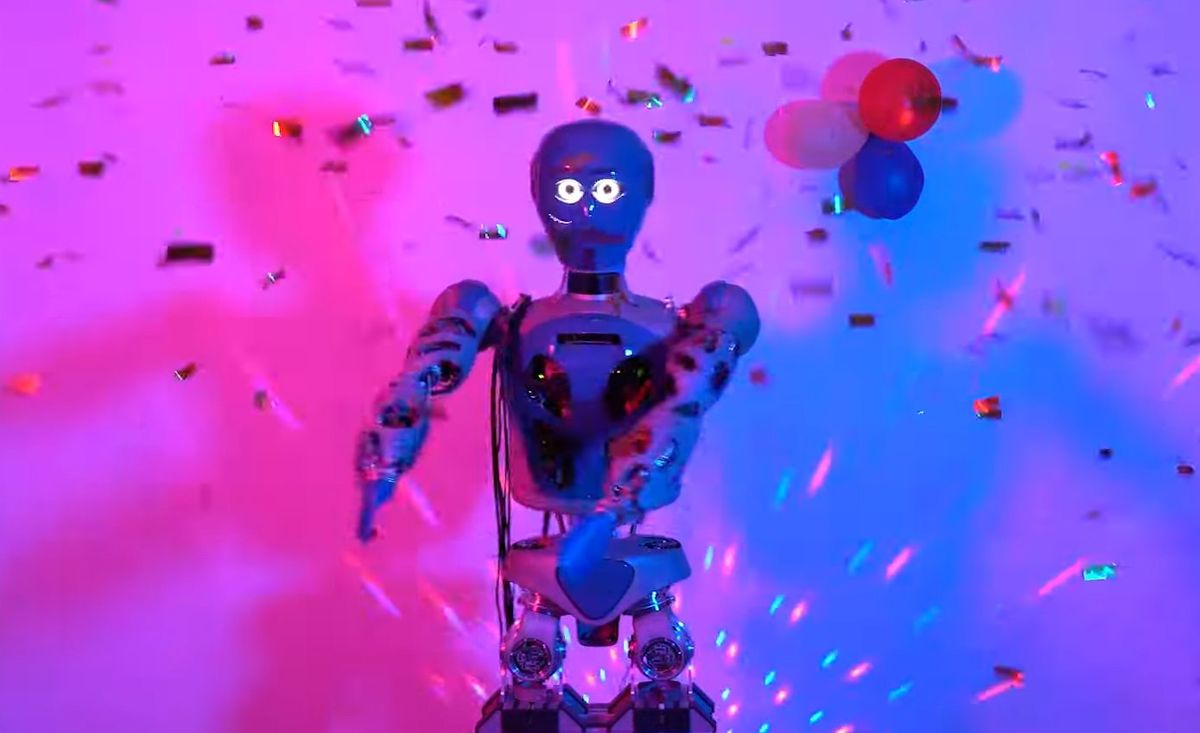Video Friday is your weekly selection of awesome robotics videos, collected by your friends at IEEE Spectrum robotics. We also post a weekly calendar of upcoming robotics events for the next few months. Please send us your events for inclusion.
IROS 2023: 1–5 October 2023, DETROIT
CLAWAR 2023: 2–4 October 2023, FLORIANOPOLIS, BRAZIL
ROSCon 2023: 18–20 October 2023, NEW ORLEANS
Humanoids 2023: 12–14 December 2023, AUSTIN, TEXAS
Cybathlon Challenges: 02 February 2024, ZURICH
Enjoy today’s videos!
Musical dancing is an ubiquitous phenomenon in human society. Providing robots the ability to dance has the potential to make the human/robot coexistence more acceptable. Hence, dancing robots have generated a considerable research interest in the recent years. In this paper, we present a novel formalization of robot dancing as planning and control of optimally timed actions based on beat timings and additional features extracted from the music.
Wow! Okay, all robotics videos definitely need confetti cannons.
[ DFKI ]
What an incredibly relaxing robot video this is.
Except for the tree bit, I mean.
Skydio has a fancy new drone, but not for you!
Skydio X10, a drone designed for first responders, infrastructure operators, and the U.S. and allied militaries around the world. It has the sensors to capture every detail of the data that matters and the AI-powered autonomy to put those sensors wherever they are needed. It packs more capability and versatility in a smaller and easier-to-use package than has ever existed.
[ Skydio X10 ]
An innovative adaptive bipedal robot with bio-inspired multimodal locomotion control can autonomously adapt its body posture to balance on pipes, surmount obstacles of up to 14 centimeters in height (48 percent of its height), and stably move between horizontal and vertical pipe segments. This cutting-edge robotics technology addresses challenges that out-pipe inspection robots have encountered and can enhance out-pipe inspections within the oil and gas industry.
Thanks, Poramate!
I’m not totally sure how you’d control all of these extra arms in a productive way, but I’m sure they’ll figure it out!
[ KIMLAB ]
The video is one of the tests we tried on the X30 robot dog in the R&D period, to examine the speed of its stair-climbing ability.
[ Deep Robotics ]
They’re calling this the “T-REX” but without a pair of tiny arms. Missed opportunity there.
[ AgileX ]
Drag your mouse to look around within this 360-degree panorama captured by NASA’s Curiosity Mars rover. See the steep slopes, layered buttes, and dark rocks surrounding Curiosity while it was parked below Gediz Vallis Ridge, which formed as a result of violent debris flows that were later eroded by wind into a towering formation. This happened about 3 billion years ago, during one of the last wet periods seen on this part of the Red Planet.
[ NASA ]
I don’t know why you need to drive out into the woods to drop-test your sensor rack. Though maybe the stunning Canadian backwoods scenery is reason enough.
[ NORLab ]
Here’s footage of Reachy in the kitchen, opening the fridge’s door and others, cleaning dirt and coffee stains.
If they ever make Reachy’s face symmetrical, I will refuse to include it in any more Video Fridays. O_o
[ Pollen Robotics ]
Inertial odometry is an attractive solution to the problem of state estimation for agile quadrotor flight. In this work, we propose a learning-based odometry algorithm that uses an inertial measurement unit (IMU) as the only sensor modality for autonomous drone racing tasks. We show that our inertial odometry algorithm is superior to the state-of-the-art filter-based and optimization-based visual-inertial odometry as well as the state-of-the-art learned-inertial odometry in estimating the pose of an autonomous racing drone.
[ UZH RPG ]
Robotic Choreographer is the world’s first dance performance-only robot arm born from the concept of performers that are bigger and faster than humans. This robot has a total length of 3 meters, two rotation axes that rotate infinitely, and an arm rotating up to five times for 1 second.
[ MPlusPlus ] via [ Kazumichi Moriyama ]
This video shows the latest development from Extend Robotics, demonstrating the completion of integration of the Mitsubishi Electric Melfa robot. Key demonstrations include 6 degrees-of-freedom (DoF) precision control with real-time inverse kinematics, dual Kinect camera, low-latency streaming and fusion, and high precision control drawing.
[ Extend Robotics ]
Here’s what’s been going on at the GRASP Lab at UPenn.
[ GRASP Lab ]
Evan Ackerman is a senior editor at IEEE Spectrum. Since 2007, he has written over 6,000 articles on robotics and technology. He has a degree in Martian geology and is excellent at playing bagpipes.



